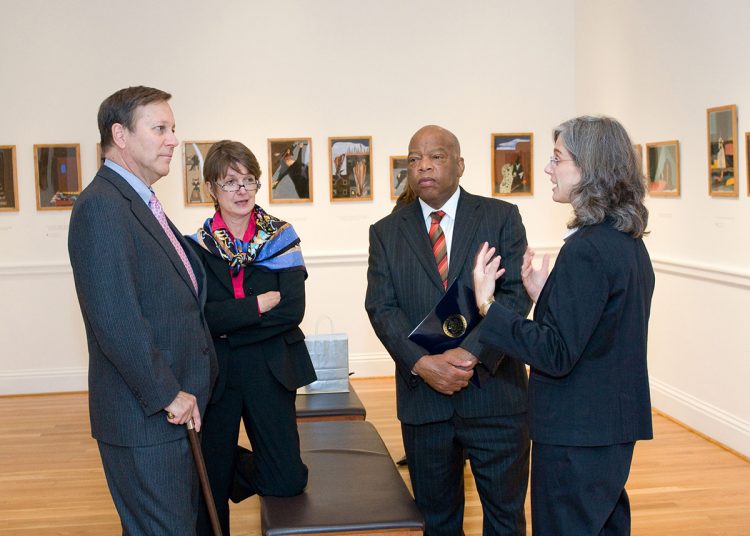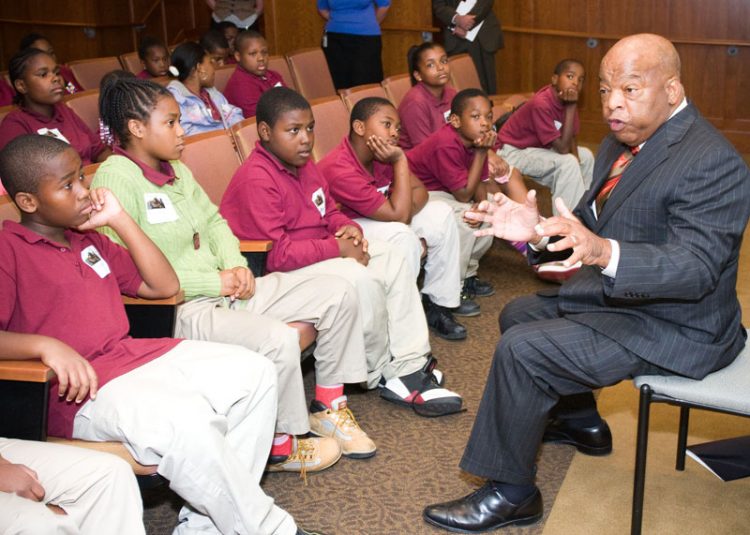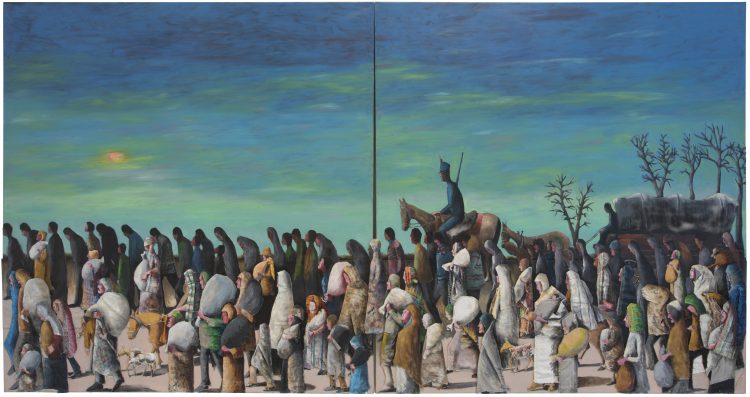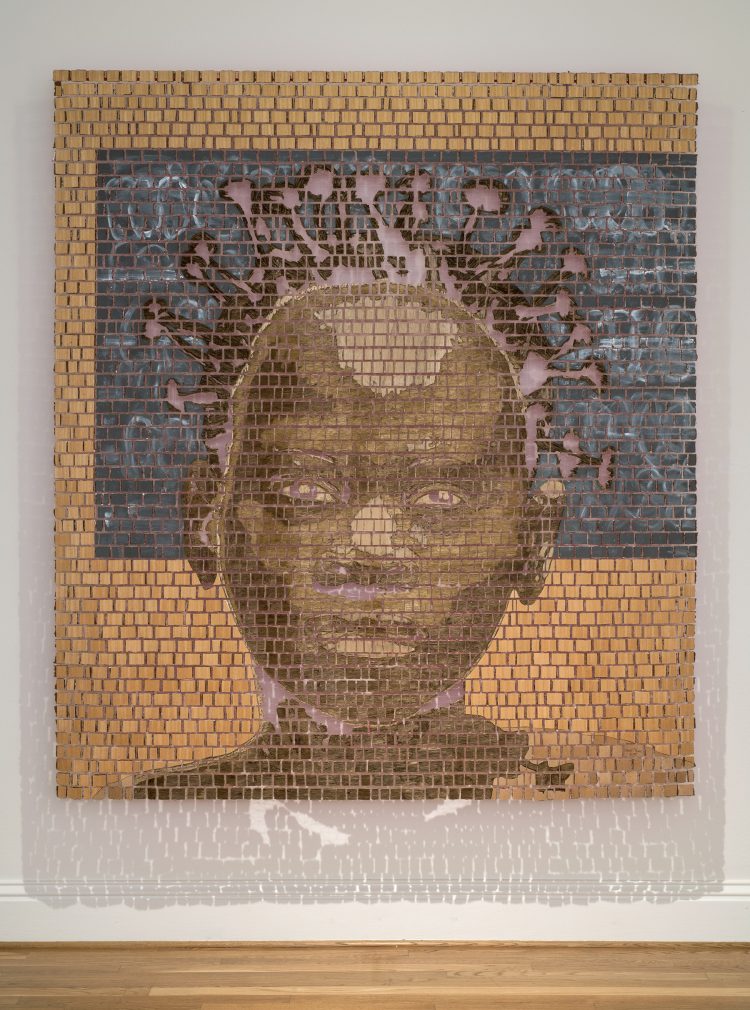What a precious experience to be back in the galleries, up close to works of art, and with fellow art lovers! It is marvelous to look closely at McArthur Binion’s DNA: Black Painting: 1 made up of birth certificate words, or the jagged wood elements in Aime Mpane’s Maman Calcule, or sense the touch of the artist’s hand in the brushwork in a Stuart Davis. Art looking is about taking time, investing patience, giving into a dialogue, or, to paraphrase Duncan Phillips, about “meeting the artist half way.” Even with the necessary safety precautions of timed tickets, limited numbers, masks, social distancing, the experience is powerful.
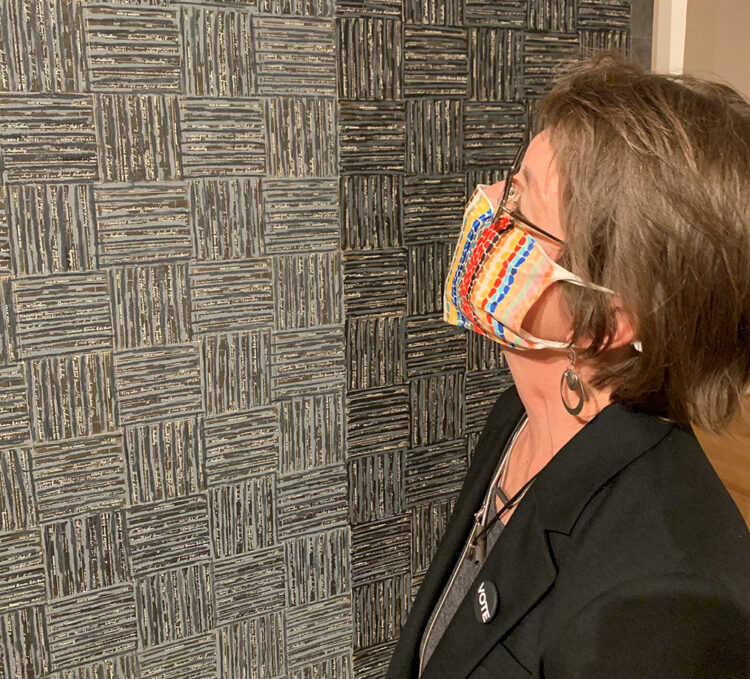
Dorothy Kosinski with McArthur Binion, DNA: Black Painting: 1, 2015, Oil paint stick, graphite, and paper on board, 84 x 84 in, The Phillips Collection, Director’s Discretionary Fund, 2016
Museums are places for art and wellness—so, naturally, the first hours of our reopening Preview Days were reserved for our many community partners, many of whom are essential workers, teachers, and health professionals; our heartfelt thanks to them for all of their heroic work through the pandemic. My thanks to our supporters, donors, and trustees for an abiding investment in our work, even as our doors have been closed. I thank our dedicated staff for engaging our audiences so creatively on myriad digital platforms during the past months, and for continuing to grow our online offerings that will be the foundation for a robust digital presence going forward. Thank you to those that have kept our building and artwork safe since March. And thank you to the frontline staff who are now on site to ensure that your visit is pleasant and safe. It has been a team effort to reopen our doors.
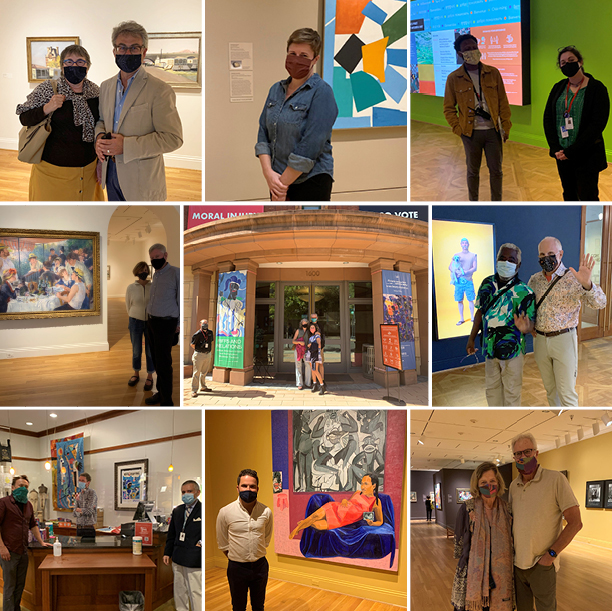
Scenes from our reopening Member Preview Days, October 8-11
Please visit—there is a lot to see: Riffs and Relations: African American Artists and the European Modernist Tradition, Moira Dryer: Back in Business (both have been extended through the end of the year), a new installation of 11 Edward Hopper paintings from the Whitney Museum of American Art, a video installation of an election theme work by Brian Dailey, and banners by conceptual artist Jenny Holzer on the main façade. And there will be more to see as we carefully open up additional galleries, and as we prepare for our centennial in 2021. Welcome back.

